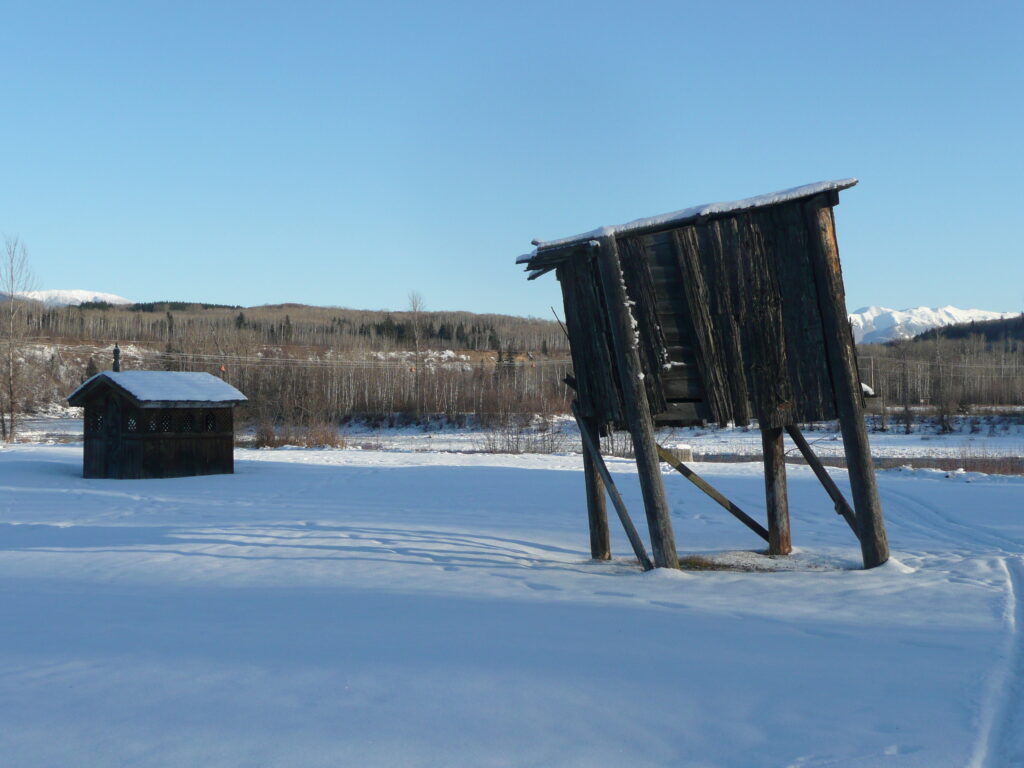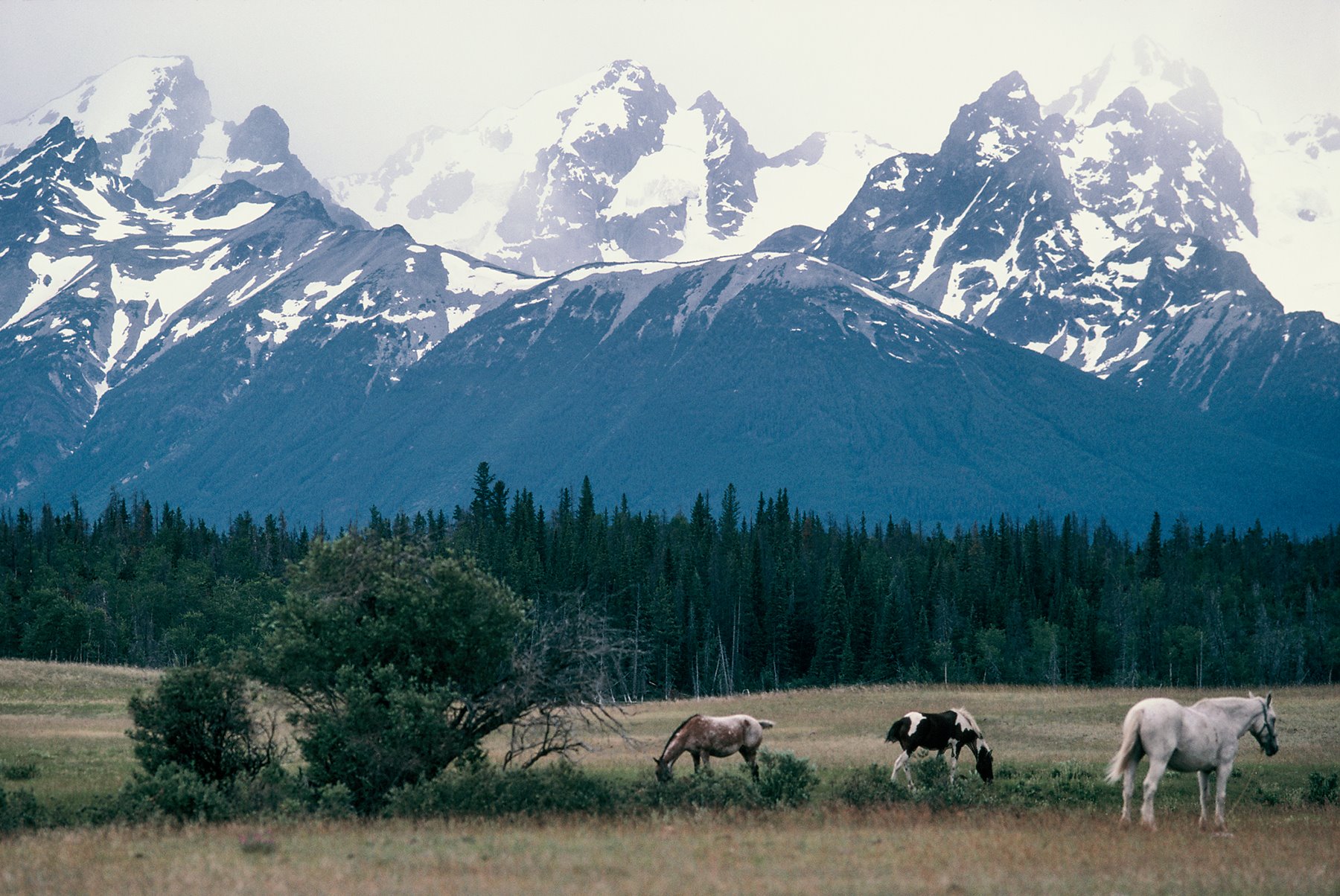In this decision the Specific Claims Tribunal found that the Williams Lake Indian Band was wrongfully dispossessed of its village lands in Williams Lake in the 19th century, and that Canada was accountable for the Colony’s failure to protect the Band’s village lands from settlers.

Photo credit: Gordon Lyall
The Band had brought the claim under s. 14(1)(b) and s. 14(1)(c) of the Specific Claims Tribunal Act (“Act”), alleging that the Crown had breached colonial legislation in allowing the Band’s settlements to be pre-empted, and that the Crown had breached its fiduciary obligations in failing to protect the settlements for the Band’s use and benefit.
The Tribunal ruled that the Colony’s policies and laws protected Indian villages and settlements from pre-emption by settlers and, further, that the Colony had fiduciary and honorable duties to protect these lands, which it breached in this instance. The Tribunal also held that Canada breached its fiduciary obligations when federal officials and reserve commissioners, knowing of the Band’s dispossession, allowed the unlawful pre-emptions to trump the Band’s interests.
Facts
a. Colonial Period
The decision begins by tracing the Colony’s policy for the creation of reserves and its laws protecting both Indian reserves and settlements from pre-emption. Judge Slade found that the Colony under Governor James Douglas pursued a policy of reserving Indian villages and settlements. Indian settlements were the villages or homes the Indians were accustomed to have, not necessarily permanent standing villages. Governor Douglas also enacted Proclamation No. 15 exempting Indian settlements from lands available for pre-emption.
The Tribunal found that during the mid-19th century the Band had village lands in what is now known as Williams Lake. It was there that they had cabins, houses, a church, and gravesites. These were also the lands they used to sustain their way of life.
The Tribunal recounted how the inaction of the Colony’s “man on the ground” in Williams Lake ─ magistrate and gold commissioner Phillip Nind ─ led to the Band being displaced from its settlement. Nind knew that the Band was living at the foot of the Lake and that settlers’ claims would soon displace the Band. Moreover, Nind had explicit instructions from the Colonial Office to make a reserve for the Band, which he failed to do. Instead, Nind and other colonial officials continued to record pre-emptions on the Band’s village lands. The Band, weakened by smallpox, was pushed off their lands by settlers.
b. Post-Confederation
The Band raised its concerns regarding the loss of its village lands on numerous occasions to federal Crown officials and missionaries and these grievances were thus well known by Canada from an early date. Most notably, in 1879, Chief William’s letter was published in the British Colonist newspaper describing his peoples’ desperate condition on account of the settlers’ actions:
The land on which my people lived for five hundred years was taken by a white man; he has piles of wheat and herds of cattle. We have nothing ─ not an acre. Another white man has enclosed the graves in which the ashes of our fathers rest, and we may live to see their bones turned over by the plough.
In 1880, Father Grandidier wrote to John A. MacDonald noting the many times in the past that the Band had brought the situation to the attention of officials and been rebuffed, and he described settlers’ actions in 1859-1860 that had resulted in the Band being driven away. The local Justice of the Peace too reported that “the land they used to own and which they used to cultivate” had been “taken from them by pre-emption in 1861 (about).”
When Joint Indian Reserve Commissioner Peter O’Reilly finally visited the Band in 1881 he saw for himself the remains of houses where the Band had lived at the foot of the Lake. However, he took no steps to challenge the pre-emptions, which were by then all in the hands of one settler. Instead, O’Reilly advised the Band that “with regard to white men’s rights they cannot interfere.” O’Reilly allotted the Band reserves in other locations, including a reserve known as Sugarcane at the head of the Lake.

Photo credit: Doane Gregory
Tribunal’s Decision
The Tribunal dealt with the claim in two main parts: (1) the issues arising from colonial times; and (2) those arising post-Confederation.
a. Colonial Obligations
The Tribunal held that the Proclamation distinctly reserved Indian settlements from the lands available for pre-emption. Although it contained no explicit positive obligation for colonial officials to protect Indian settlements, its objective could not be achieved if this was not done. Nind was charged with the responsibility for giving effect to colonial law and policy; and it was his job to ensure that the Band’s settlement lands were protected, which he did not do. He was instructed to mark out a reserve for the Band, which he also failed to do. The Tribunal noted that Nind “turned Colonial policy and law on its head” by allowing pre-emptions to trump the protection of the Band’s villages. The Tribunal concluded that the pre-emptions contravened the Proclamation, as the land was part of an Indian settlement within the meaning of colonial policy and law, and should not have been available to settlers.
Judge Slade went on to find that s. 14(1)(b) of the Act allows First Nations to bring claims to the Tribunal alleging a breach of a legal obligation contained in colonial legislation, where the colonial legislation at issue pertains to Indians or lands reserved for Indians. The Tribunal found that the Proclamation and the fact that it reserved Indian settlements from pre-emption, was legislation that pertained (i.e., related) to Indians or land reserved for Indians.
The Tribunal also considered whether the Colony had breached its fiduciary duty owed to the Band.
The Colony had promised the Indians (through policies, laws, and in-person statements) that it would reserve their settlements and village sites for their benefit. In particular, in the face of Indian unrest, Governor Douglas promised the Indian tribes that had gathered at Cayoosh and Lytton that reserves would be created. This, the Tribunal found, was evidence of the undertaking expressed in colonial policy and law to act in the Indians’ best interests by enforcing the statutory prohibition of pre-emptions of land within their settlements.
The Band had a substantial practical interest in its settlements, and its interests were adversely affected by the Colony’s exercise of (or failure to exercise) its discretionary control. The Tribunal concluded that based on these facts, the Colony owed fiduciary obligations to the Band.
Given the Colony’s promise to the Indians, the Tribunal reasoned that the Colony should have acted diligently to stake out Indian settlements, and where Indian settlements were found to have been pre-empted, the Colony should have exercised its power to resume. The Colony breached its honorable and fiduciary duties to the Band in this regard.
b. Post-Confederation Obligations
To determine whether the obligations in Article 13 of the Terms of Union 1871 and s. 91(24) of the Constitution Act rose to the level of fiduciary duty, the Tribunal had to consider what was meant by the obligation in Article 13 for Canada to continue “a policy as liberal” as that pursued by the Colony. The Tribunal concluded that “the colonial policy adopted by Canada under Article 13 of the Terms of Union included the protection of Indian settlements and the authority to move to set aside pre-emptions made contrary to provincial law.”
The Tribunal found that Canada had, by the terms of Article 13, undertaken on behalf of the Indians to adopt the Colony’s liberal policy regarding reserve lands. In so doing Canada assumed the unilateral undertaking previously made by the Colony, which had constitutional effect and thus invoked the honour of the Crown. Canada lacked the power to unilaterally allot a reserve; however, it had the ability to make the liberal policy effective by challenging the pre-emptions, and it had a duty to act diligently in the interests of the Band.
The implementation of Article 13 was to occur through the creation of the Joint Indian Reserve Commission (“JIRC”) in 1876 and subsequent continuation of the work of the JIRC by the sole reserve commissioners, including O’Reilly. The commissioners were mandated to be guided by the spirit of the Terms of Union, which contemplated the pursuit of a “liberal policy” towards the Indians, and having regard to their “habits, wants and pursuits.” The Tribunal held that a fiduciary duty existed post-Confederation: there was both a cognizable interest based on the Band’s occupation of the lands, and an assumption of discretionary control. Canada was the exclusive intermediary with the Province in relation to Indian interests in their lands, and thus exercised discretionary control over the advancement of their interests. At a minimum, Canada owed the Band fiduciary duties of loyalty, good faith, full disclosure, and ordinary prudence.
On the facts of this case, federal officials and commissioners, knowing of the displacement of the Band from its lands at Williams Lake, should have taken steps to protect the Indian settlements, such as through challenging the unlawful pre-emptions. Further, the Tribunal found that O’Reilly’s refusal to interfere with white men’s “rights” was, in the circumstances, a breach of an honourable obligation, as he was the appointee of Canada and the Province to act in good faith to achieve the objectives of Article 13. The Tribunal stated: “… Equity does not condone the unlawful acquisition of settlers’ interests standing as an impediment to the performance of a fiduciary duty.”
Conclusion
The Tribunal applied existing legal principles established by the courts to find that the claim was validly made out within the meaning of the Act. This is the first pre-Confederation claim to be considered and validated by the Tribunal. The decision breathes life into the content of the Colony’s “liberal policy” which Canada committed to continuing upon Confederation. The decision also rejects Canada’s diminished version of the liberal policy. The Tribunal’s reasoning on the existence of fiduciary and honourable duties, both on the part of the Colony and, later, Canada, underscores the high standard of conduct required when the Crown is dealing with Indian interests in their villages and settlements. To fulfill its obligations, Canada must act on the opportunities available in the best interests of its Indian beneficiaries.
This case summary provides our general comments on the case discussed and should not be relied on as legal advice. If you have any questions about this case or any similar issue, please contact any of our lawyers.
See CanLII for the Reasons for Judgement.